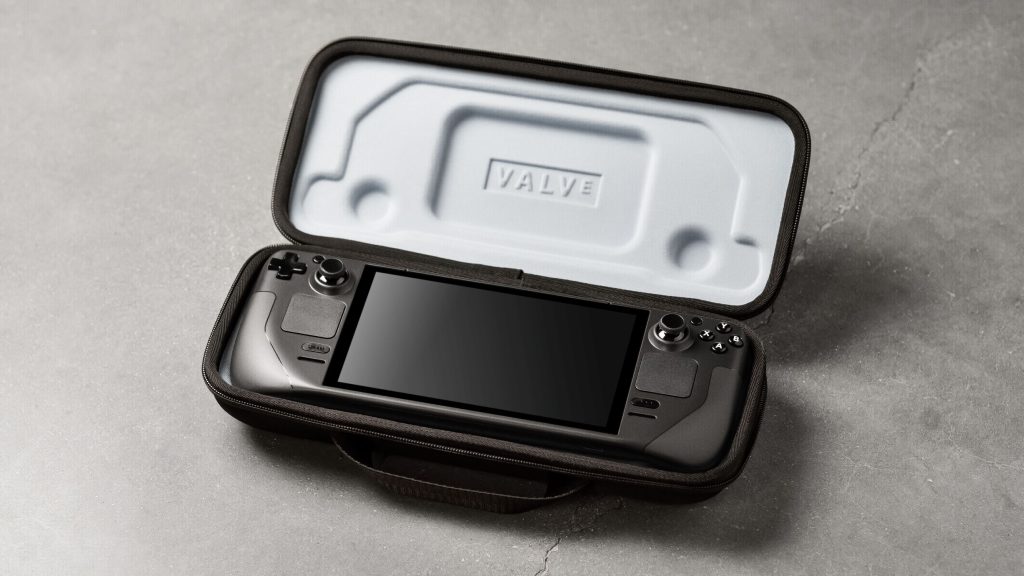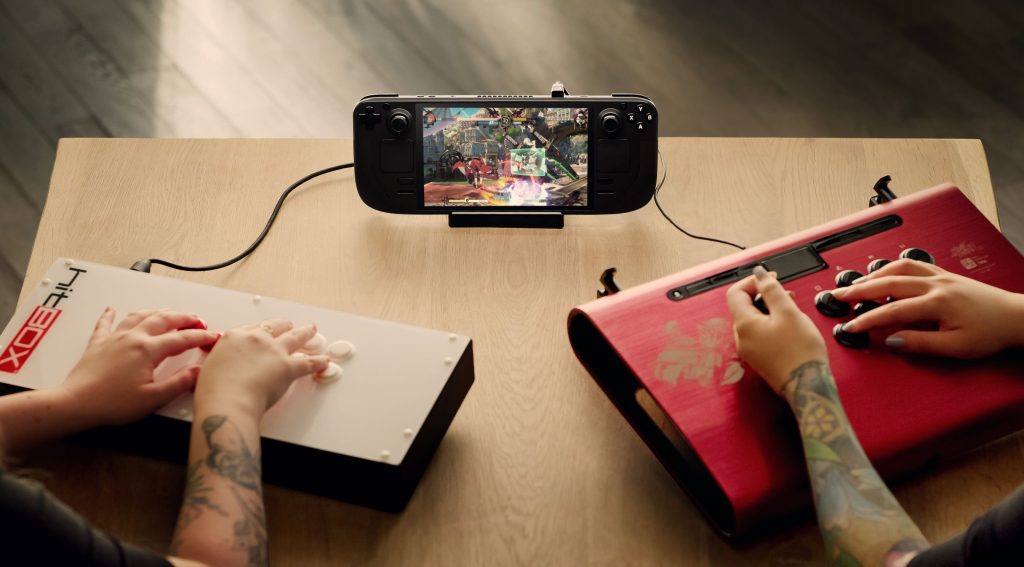The Steam Deck, Valve’s entry device into the handheld gaming world, has officially been available for 1 year, so what better time to analyze the system’s capabilities, the changes it’s gone through, and whether or not it’s an adequate option for playing on the go?
The difference a year makes
Released to the public on February 25, 2022, the Steam Deck had a bit of a rocky start, with plenty of early purchasers having mixed feelings due to the playability of several games on the system. However, after hundreds of very frequent updates and patches to the system’s firmware, a majority of these issues have been fixed, and in 2023, the Steam Deck is a revolutionary gaming device.
Valve sells three different versions of the Steam Deck: a 64 GB version, a 256 GB version, and a 512 GB version. Regardless of the version you buy, Steam Decks are extensively customizable, meaning you’re not locked into only having the specs of the edition that you purchased. This is no surprise, as Valve has been very clear from the initial reveal of the handheld system that it would essentially be a mini PC, but some of the upgrades that we’ve seen have still managed to blow our minds and further showcase the true potential of the Steam Deck. For starters, the SSD is completely upgradeable, along with the other components, so long as they’re able to fit in the compact space inside of the console. You can even install a new GPU, as displayed by YouTube Channel UFD Tech.
In addition to hardware customizability, there’s plenty of room for personalization when it comes to software. The Steam Deck runs off of the Linux-based SteamOS, but it is entirely possible to install Windows onto the system if that’s what you fancy. Users have successfully partitioned their storage in order to dual-boot Windows onto their Steam Deck. When it comes to gaming, the Steam Deck has a variety of performance options that get quite intricate. Some of these include the ability to limit framerate, set the GPU’s clock frequency, change the refresh rate, and limit processing power. You’re also able to toggle an overlay that displays as much performance information as you like.
Getting used to things

The Steam Deck has all of the standard buttons that you’d expect on a gaming controller, along with a right and left touchpad and four back buttons, all of which are reprogrammable. I’ve been using my Steam Deck as a means of streaming my Playstation 5 games when I’m not sitting at my desk, and being able to remap how each button works has been extremely helpful in adjusting the Steam Deck controls to match that of a PS5 controller. Reprogramming the device’s buttons is very straightforward, and you can save the changes you make for each game.
The console is fairly large for a handheld device. Compared to a Nintendo Switch, the Steam Deck is quite large and heavy, which may make it a bit harder for portability and gaming on the fly. Despite this, gaming with the Steam Deck is an overall comfortable experience. The backside of the device has protruding edges on the left and right, making gripping the Steam Deck an easy and ergonomically efficient task. The button placement was very easy for me to adjust to, I never felt like I had to awkwardly move my hands or fingers in order to play any of the games that I’ve been playing on it. Speaking of video games, the Steam Deck has easily handled many of the top AAA titles, with most of the games I’ve tried in recent months including Cyberpunk 2077 and Red Dead Redemption 2, staying between a solid 50-60 fps on high-medium settings. I was honestly surprised with how consistently the Steam Deck would maintain a stable 60fps frame rate in a majority of the games that I tried.
When the Steam Deck was initially released, many users complained about a variety of games not performing well on their brand-new system. Valve has taken this criticism in stride and has continuously released patches and updates that have addressed the vast majority of those complaints. In the span of one year, Valve has managed to verify thousands of Steam games and is exceptionally communicative on why each game has been determined to be compatible, playable, or just flat-out unplayable on the Deck. When you click on a game in your library or in the Steam Store, a message will show up describing what possible issues you may run into if you play the game on the Steam Deck. If the game is determined verified/compatible, however, it will have a green checkmark and you can expect to have a perfectly smooth experience playing it.
A versatile handheld

The Steam Deck also includes a microSD card slot, a built-in microphone, a headphone jack, and a USB-C port. These additions make gaming that much easier than with many other handheld gaming consoles. Some have used the USB-C port in order to hook the Deck to a docking station and cast the device’s screen to a TV or larger monitor. I personally connected an ethernet hub to my Steam Deck in order to download my games quicker, which was a huge help, considering my Deck usually takes 20+ minutes to download games. It doesn’t just end with gaming, the Steam Deck also has a desktop mode, which allows you to browse the internet and use the console like you would any other PC. YouTuber YongYea used this feature to its full capacity in order to record and edit an entire YouTube video.
When it comes to battery life, the Steam Deck does a decent job of keeping you in the game for a long period of time. If you’re playing a brand new, shiny AAA video game, the system tends to run for about 1-2 hours of consistent gaming without a charge. If you’re playing something less demanding, though, like an indie or older video game, you can stretch about eight hours maximum into your game time without a charge. Luckily, Valve has incorporated some battery-saving options in the Steam Deck’s settings such as brightness, a sleep mode, and the ability to dim the screen after a few minutes of inactivity.
After a year of changes to Valve’s golden boy handheld device, the Steam Deck has continued to grow in popularity, and for the last four months, has been available for purchase online without a reservation. Steam Decks have seen a plethora of custom modifications made by the community, which have only just scratched the surface of the capabilities of this handheld device. With a rapidly growing list of compatible video games, access to the entire Internet, extensive customizability, and a company behind it that’s dedicated to improving it, the Steam Deck has earned its place as a respectable option for gamers to pick when it comes to handheld gaming in 2023.


